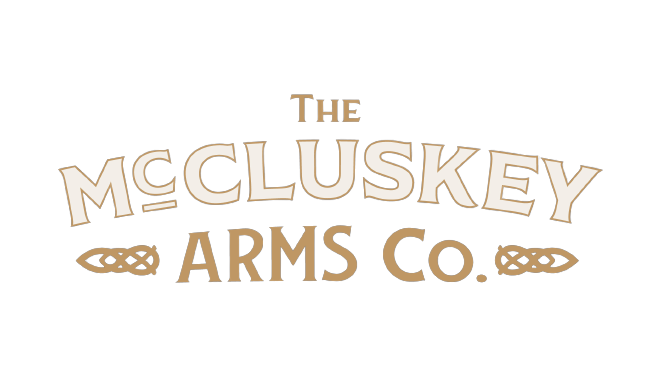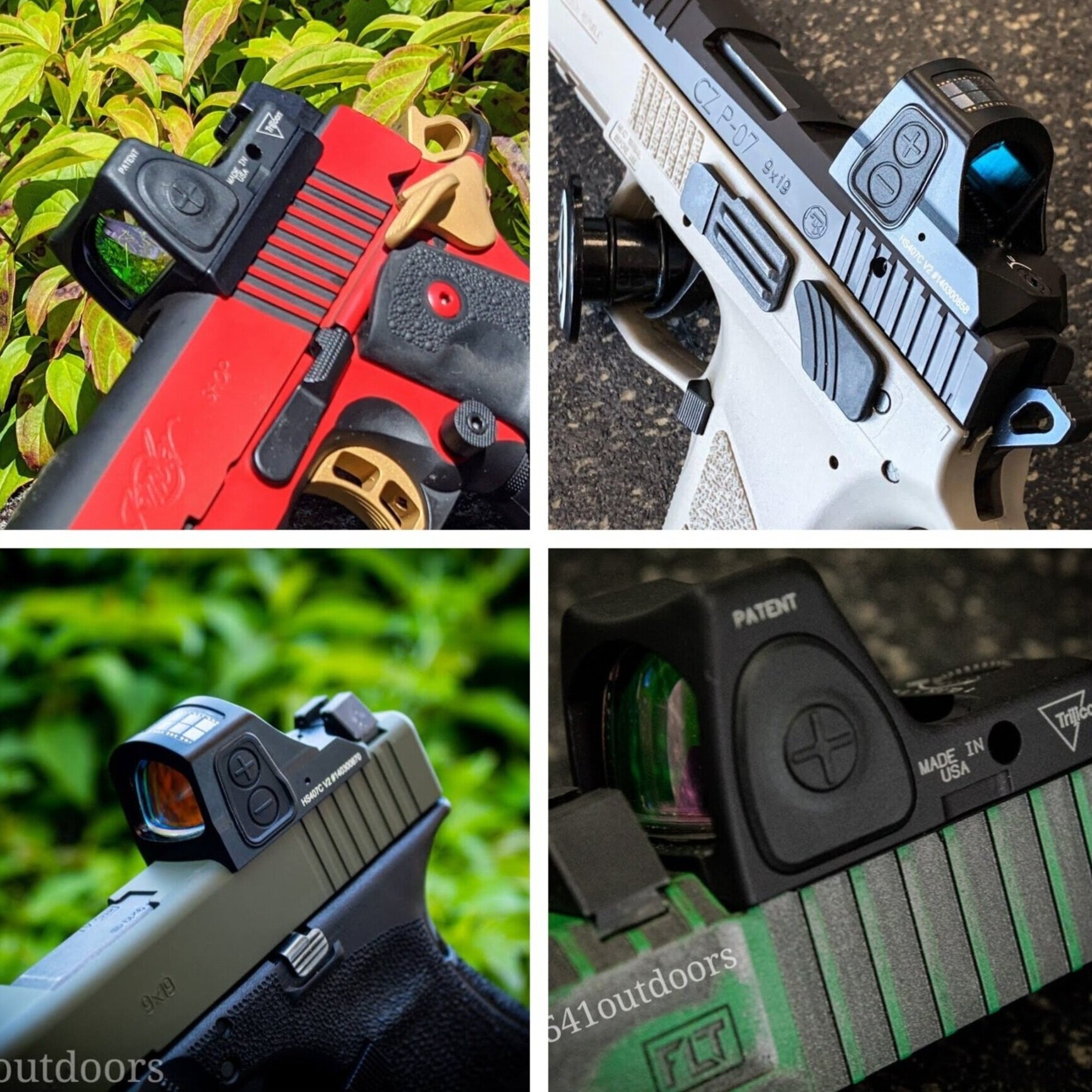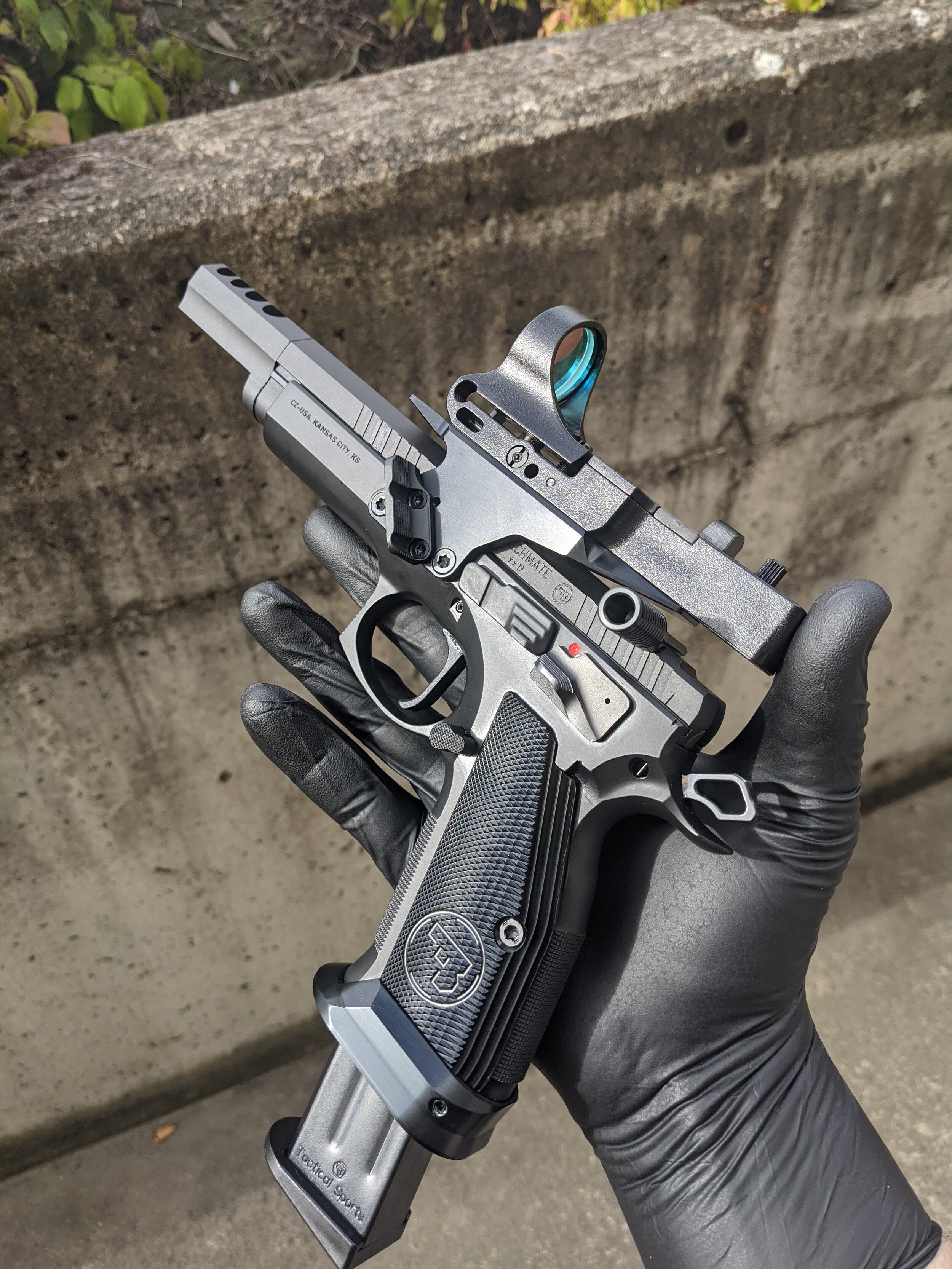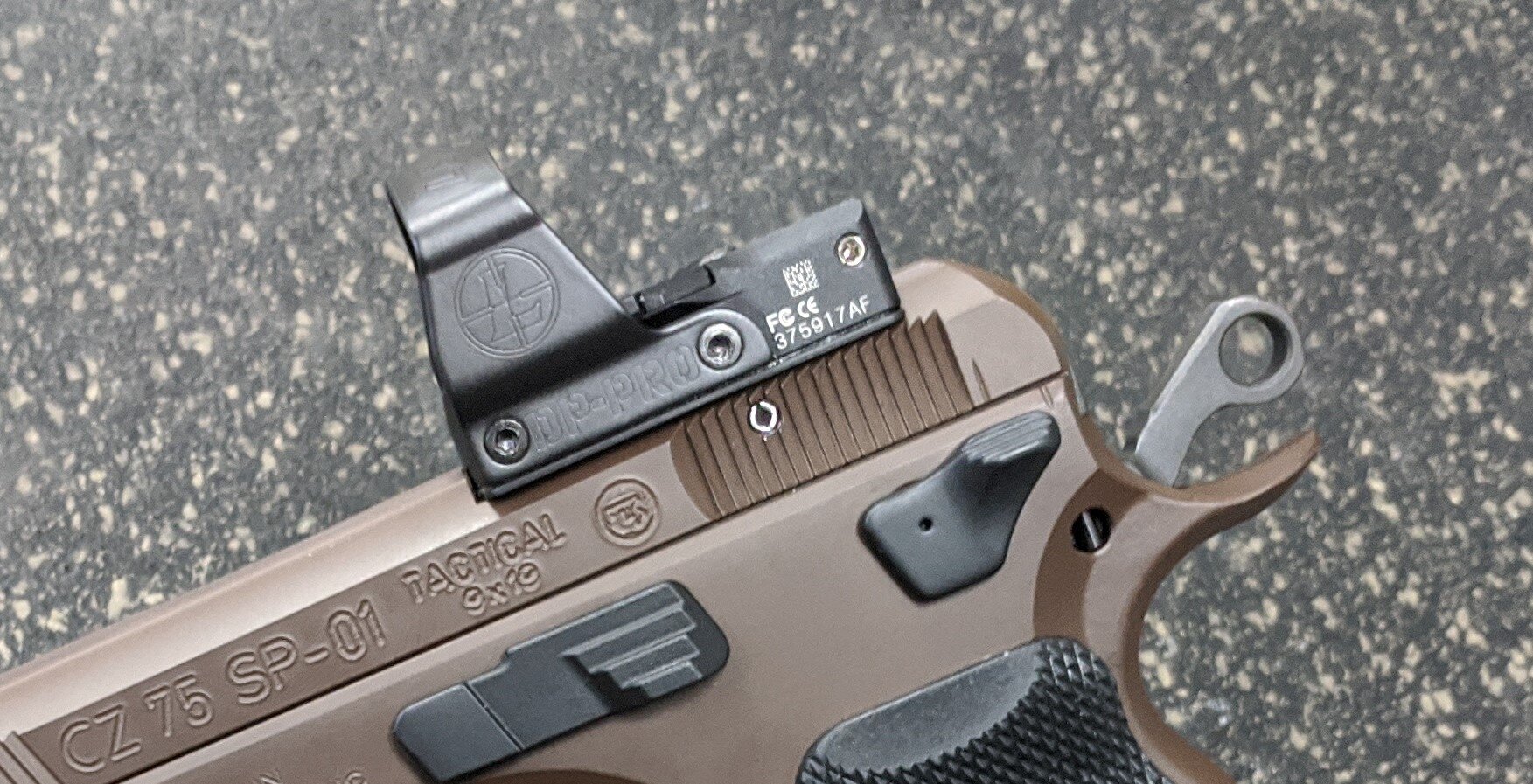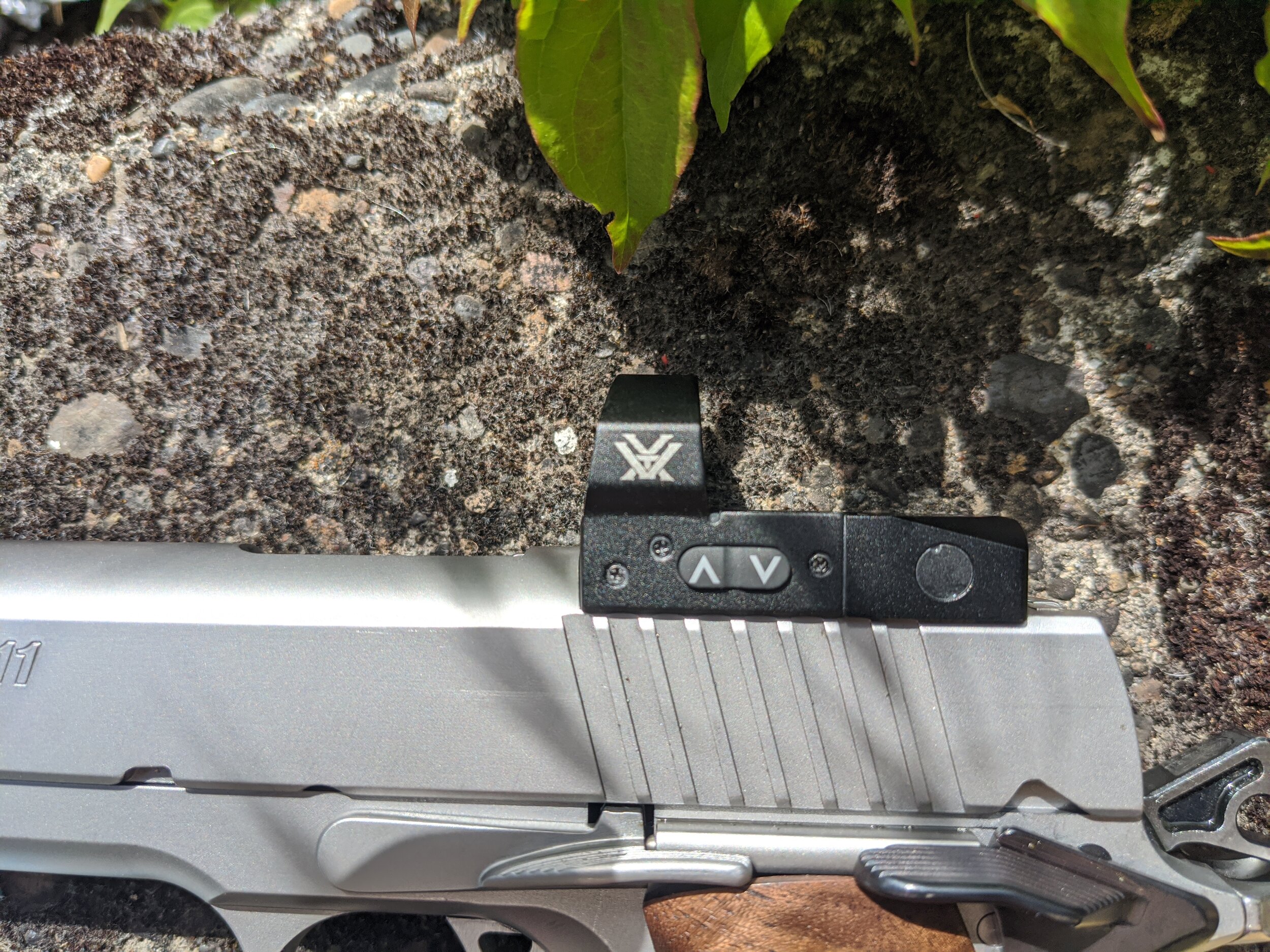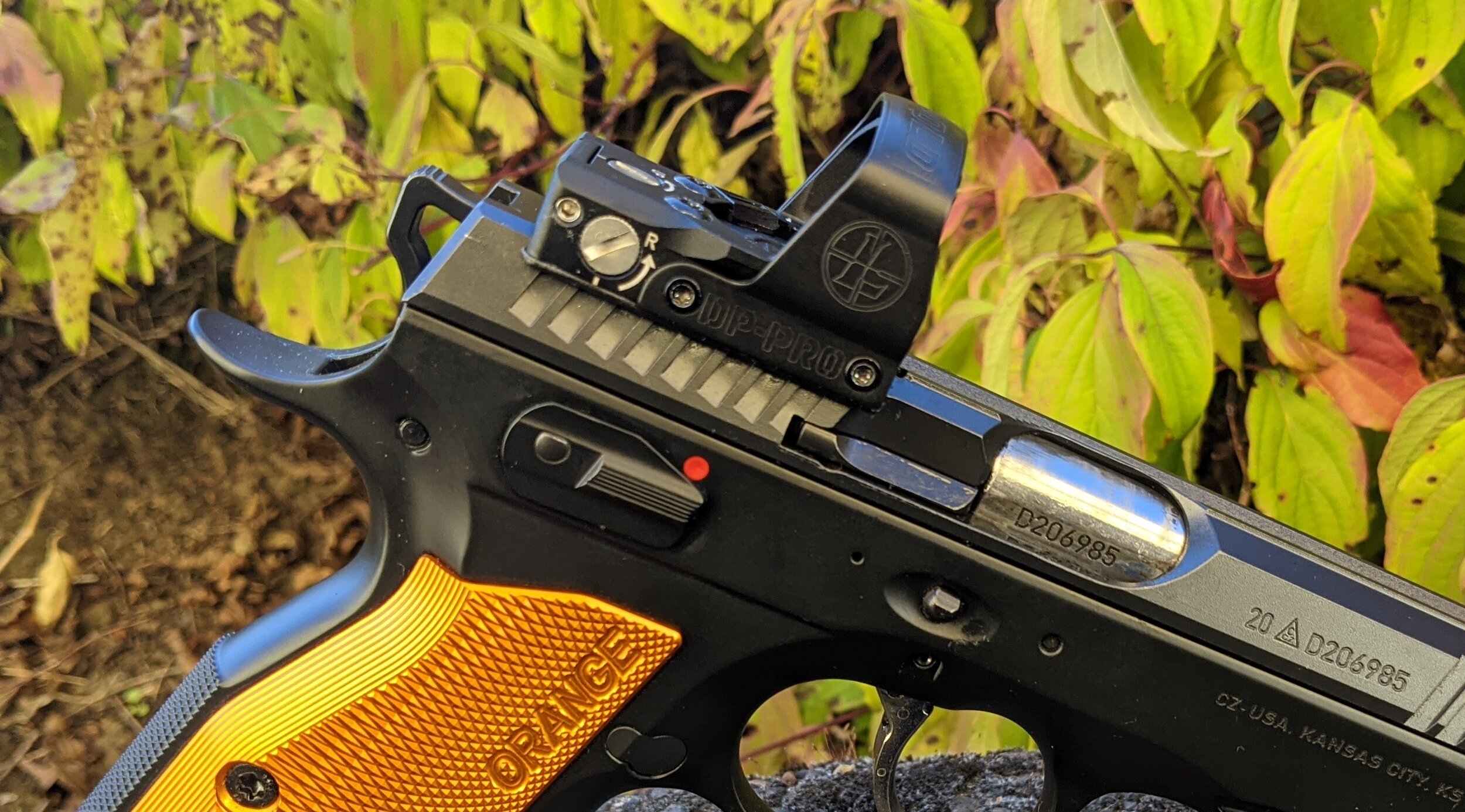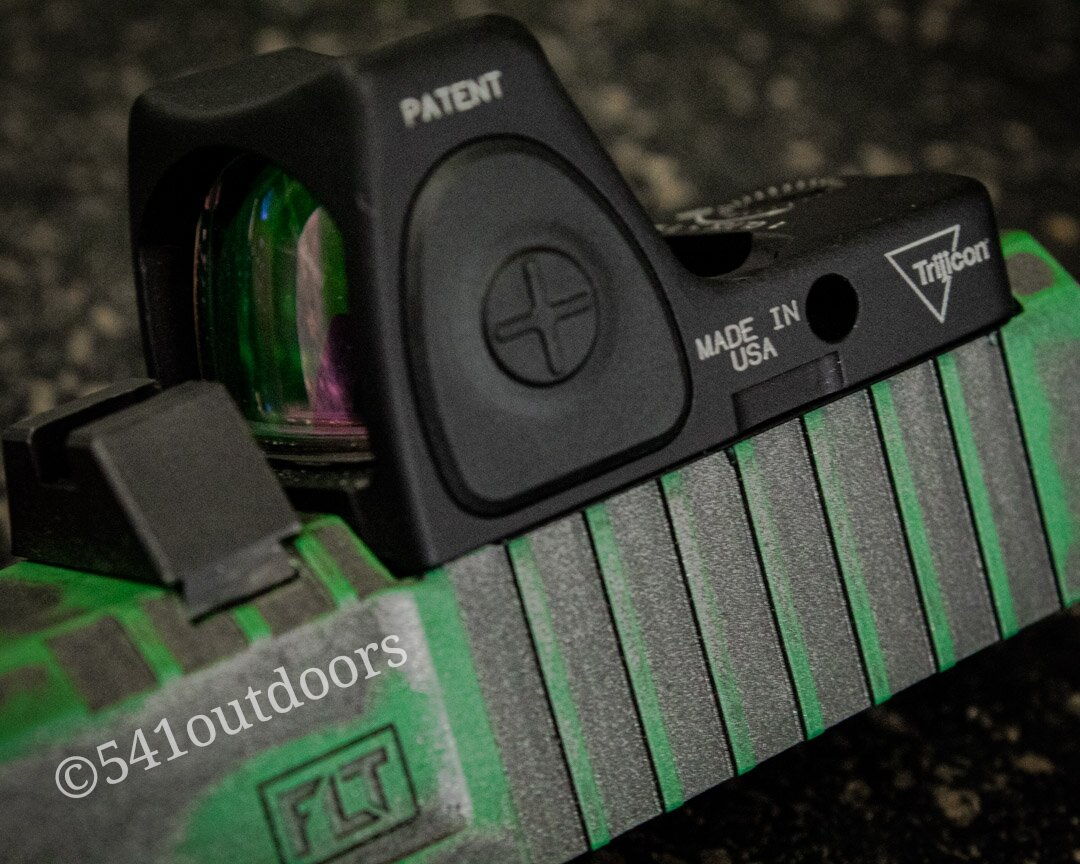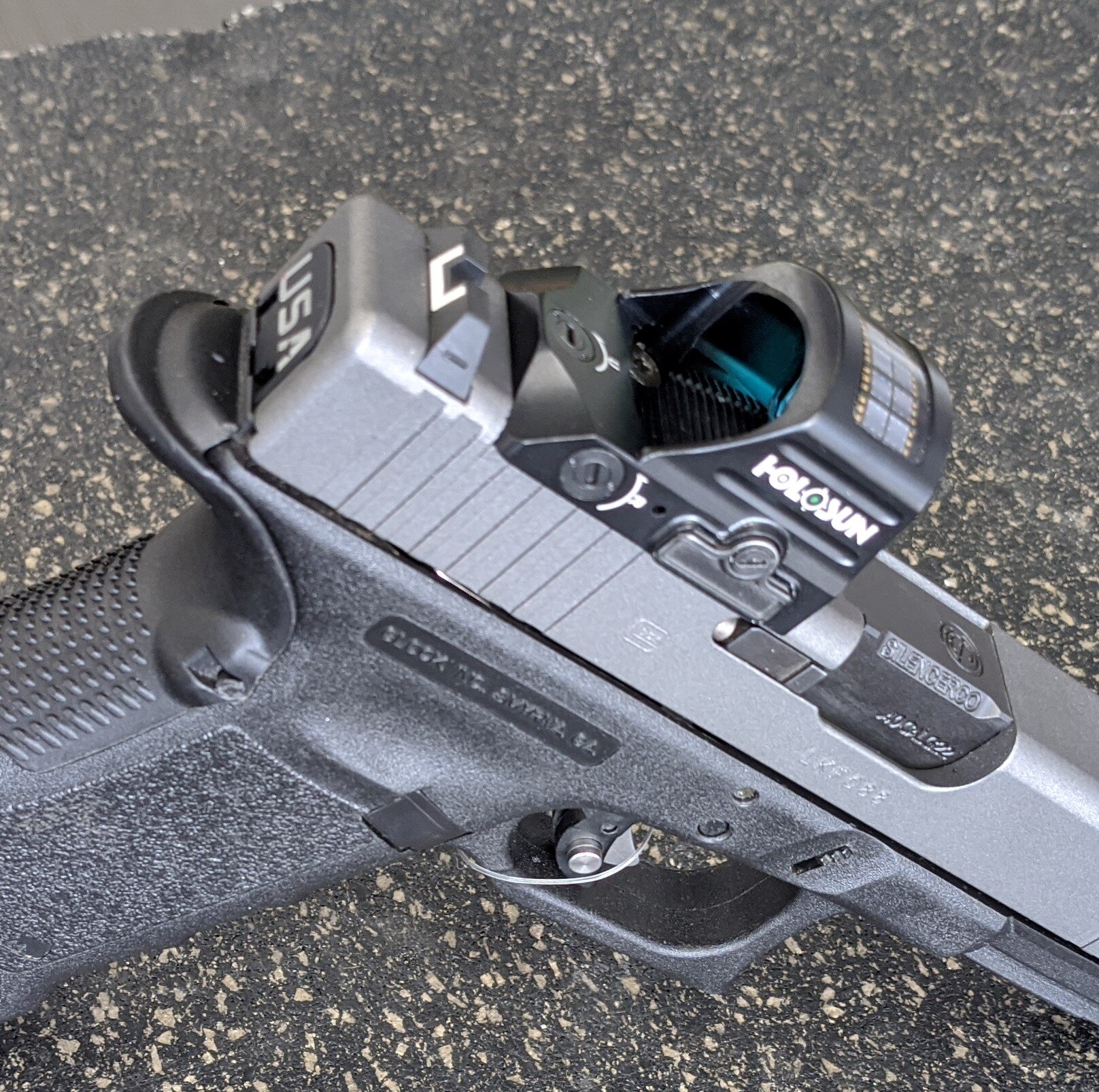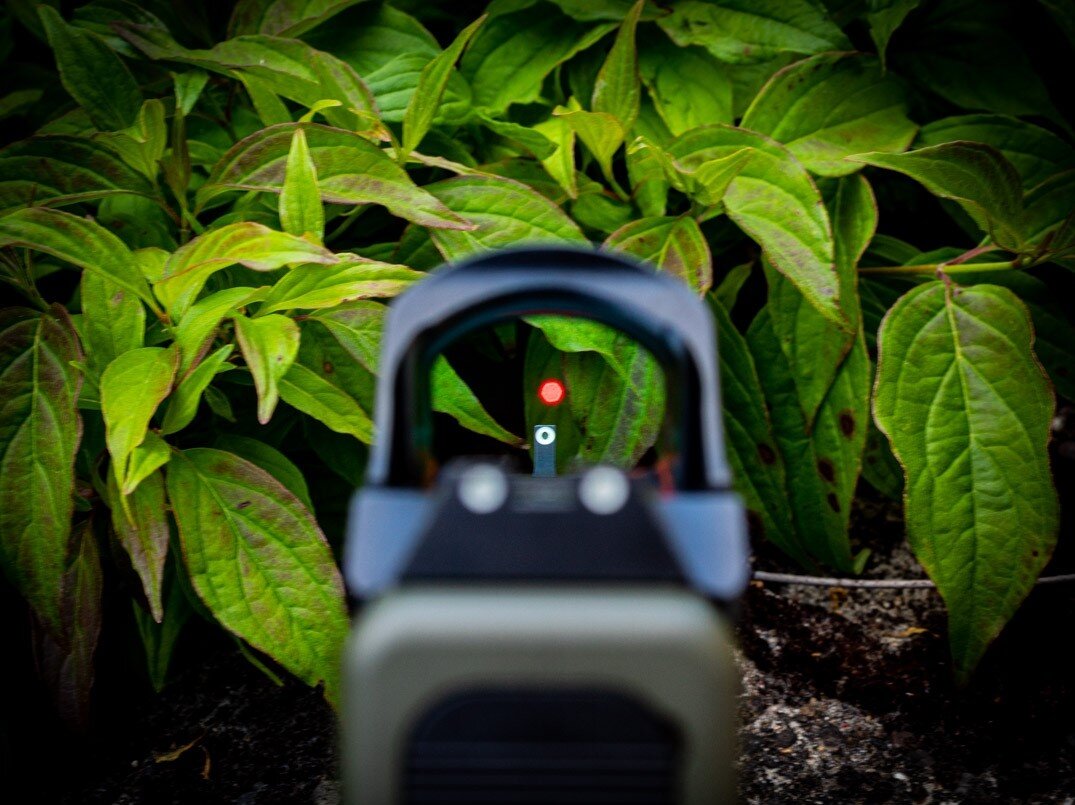Feat of the Week: Optic Cuts
Welcome to our weekly blog post! Each “Feat of the Week” features firearm(s) we have worked on recently. These are showcases of our repair work, custom machining, Cerakote, or a combination of services. We are excited to share our gunsmithing feats with you!
In this gunsmithing Feat of the Week, we focus on pistol optic cuts. As one of the newest trends in the industry, this is one of the most common services we provide. We love every aspect of these jobs, and we can’t wait to share with you the details of our process. So let’s get started!
Optic Cuts
Quick History
In 1990, Professional shooter Jerry Barnhart was the first to use an Aimpoint rifle red dot sight—an optic first designed in the 1970s—on his pistol in IPSC competition. Soon thereafter, other professional shooters began mounting red dot scopes on their pistols for competition. Red dot optics back then weren’t as reliable or as advanced as they are now. The dot was often small, dim, and quite frequently the batteries went out. Additionally, because these optics were originally made for rifles, they had to be mounted onto the frame of the pistol which often amounted to 50% of the pistol’s weight.
CZ Competition Pistol and Optic
Despite these setbacks, professional shooters in the “Open Class” began to embrace the advantages of red dot optics on their pistols. Now, companies like Trijicon, Leupold, and Holosun make miniature red dot optics specifically to be mounted onto pistols. The next generation of competition pistol optics are coming. Check out this optic we mounted the other day.
Thanks to the research and development of these companies, pistol optics have become more commonplace for regular shooters at the range. Miniature red dot optics are flying off the shelves like hotcakes. Most of my friends have one, and if they don’t, they’re definitely saving up.
Red dots on pistols have become one of the hottest topics in the firearms industry, and everyone has an opinion. We do too, obviously, but we aren’t here to debate the efficacy of pistol optics versus iron sights in competition or defense scenarios. This isn’t a conversation about the advantages and disadvantages of pistol optics versus iron sights. We are here to talk about the differences between a factory optic cut and a custom gunsmithing pistol optic cut as well as discuss our pistol optic cut process.
Factory Cut vs Gunsmith Cut
Because of the increased use of red dots on pistols—especially among non-competition shooters—many guns now come from the factory with optic cuts. These pistols are pre-machined to fit a variety of optics. In order to accommodate the different pistol red dots, they use a plate system. This is a great option for many people who do not have access to a gunsmith or who want to try out various optics, but there are some downfalls to these factory optic cuts.
For one, the cuts on mass produced guns aren’t machined to the maximum depth. This, in addition to the plate system, means that the optic sits higher on the slide. Increased height over the bore axis makes it less intuitive to aim. The goal with any optic is to minimize the distance between the sight and the barrel. Decreased distances allows for natural and optimal aiming.
Factory Optic Cut and Plate System
Factory optic cuts also don’t fit the optic as well nor do they look as good. With a gunsmith’s cut, the optic fits perfectly to the slide—with no gaps. The plate system, while it enables the interchange of optics, looks cumbersome. Having a gunsmith custom machine the slide to a specific optic is not only great for looks but also for functionality. In a factory plate system, the screws endure all of the wear and recoil force. This can cause the screws to break off in hole and the optic to fall off—not ideal in either a competition scenario or a defense situation. Conversely, on a gunsmith’s optic cut, because there are no gaps, the frame of the optic absorbs all of the recoil force. Thus, the optic is secure, and the screws aren’t at risk of breaking off.
Finally, with a gunsmith’s optic cut, the customer can decide what exactly they want to do with their iron sights. With factory cuts, the customer is stuck with whatever the manufacturer decides is standard. At McCluskey Arms, we offer three options: irons delete, irons forward, and irons rear.
Options for Iron Sights
The first option is iron sight deletion. We recommend this for competition shooters. This option definitely looks the cleanest, and if the pistol isn’t going to be used for defense, there’s no need to keep the iron sights for a backup. We usually leave the front sight on to help acquire the target, but this can be removed if the customer so desires.
The most common choice, and the one we recommend for defense guns, is irons forward. This option best protects the optic while also retaining the irons as backup sights. With the irons in front of the optic, the red dot is protected from brass and gas escaping the chamber. Additionally, it protects the front of the optic from impact on other objects because the much more durable iron sights are hit first. In addition to milling the optic cut, we also have to mill a new slot for the iron sights.
Finally, customers can choose to keep their irons in the rear of the gun. Again, this option allows the customer to have a backup sight if the red dot doesn’t work for whatever reason. For machining purposes, this option is the easiest because we don’t have to cut an additional slot for the iron sights. However, unlike irons forward, the optic isn’t as protected because it sits closer to the chamber.
Our Process
When we first started the company in our garage, we used a benchtop mill to machine optic cuts. Each cut, with prep and check, took multiple hours. Now, with our CNC mill, the machining time has drastically decreased. Once the specific cut is programmed, all we need to do is set up and press go. Most of our time now goes into programming. Every pistol variant has a program for each optic and the three iron sight options. With every possible combination of pistol and optic, our programming will continue for quite sometime. And with how many optic cuts we do each week, it’s a lot of programming.
Irons Forward Pistol Optic Cut
After programming the CNC, we run a test on bar stock steel. Not only does this allow us to test the tool path of the mill, but it also gives us the chance to make sure the optic fits perfectly in the practice cut. Once we’ve ensured the mill’s tool path is correct and the cut is perfect for the optic, we mill the slide. For slides with standard colors—such as black, tan, or tungsten—each pistol cut job comes free with a fresh coat of Cerakote paint.
As I’ve said in previous blog posts, machining is one of my favorite aspects of gunsmithing. I love the process of designing and programming. And isn’t it satisfying to watch the metal chips fly off the slide?
NEXT UP
We hope you enjoyed this week’s gunsmithing feat. Thanks for following along! Our next feature will be posted Monday, November 9th at 9am. Comment for any content you want to see, and don’t forget to follow us on social media!
If you want an optic cut for your pistol, drop us a message here or visit our shop in person! We look forward to meeting you and gunsmithing for you.
Sources:
gunsandammo.com/editorial/a-history-of-pistol-mounted-red-dots/248367
